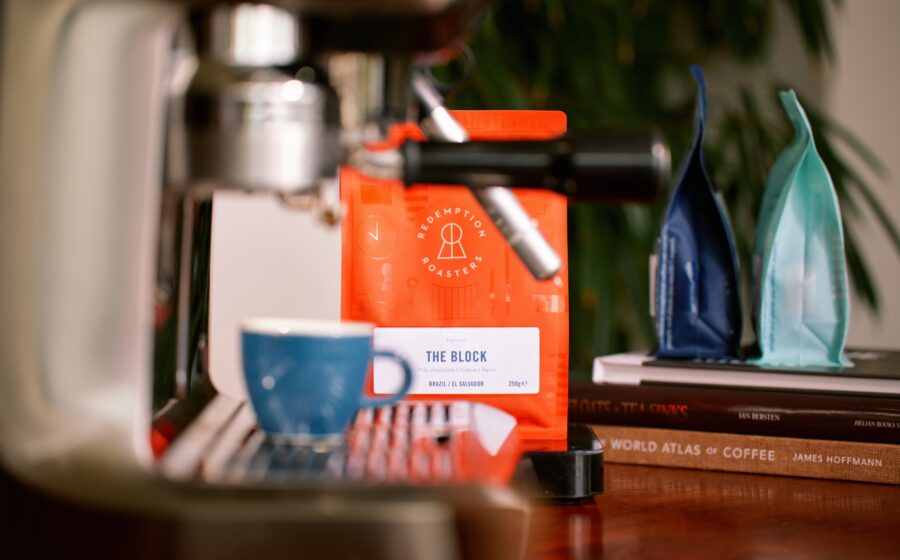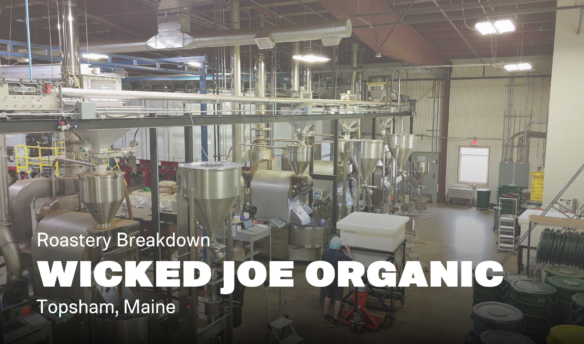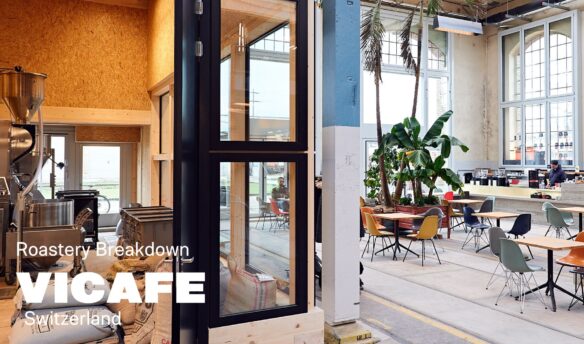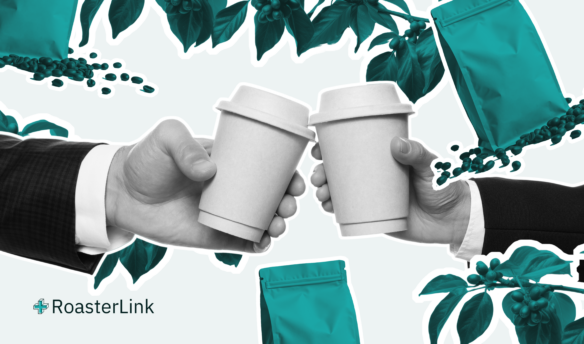Most people who leave prison end up being rearrested and incarcerated again. In the United States, two out of three former prisoners are rearrested within three years, and more than half end up incarcerated again. Breaking that cycle of recidivism, and reintegrating ex-offenders into the workforce, is challenging—having a criminal record reduces the chances of receiving a job callback by half.
One way to combat recidivism is through work training and hiring programs that help prisoners find reliable and fulfilling employment upon release. Studies have shown the benefits of such initiatives, with one 2023 study finding that stable employment reduced the likelihood of reoffending by nearly 60%.
Coffee is well-suited to these sorts of programs because of the relatively low barrier to entry for many roles, as well as the sheer number of cafes and roasteries around the world. The industry provides a wide pool of possible opportunities for those with the right training, while working as a barista, for example, helps develop soft skills that can transfer to future jobs.
Over the past decade, a number of coffee companies and organizations in the U.S. and beyond have developed training and employment programs to help currently and formerly incarcerated people reintegrate into the workforce. They range from roasting programs within prisons to coffee companies that specifically hire ex-offenders upon release.
The sample size is small, but these companies report lower recidivism rates than the national averages in their countries. They have helped hundreds reintegrate into their communities, offering an example of the meaningful impact coffee can have on people’s lives.
A Complex Transition
There are around 11.5 million people in penal institutions around the world, according to the latest World Prison Population List, a number compiled by the Institute for Crime & Justice Policy Research. Nearly 1.8 million of those incarcerated are in the United States. While down from a peak in 2009, the current U.S. prison population is nearly four times as large as in the mid-1970s. Each year, more than 600,000 individuals are released from state and federal prisons and must reintegrate into society.
“For most offenders, as well as for their families and communities, re-entry is a complex transition,” criminology professor Charis E. Kubrin wrote in 2013. “Former offenders often struggle with substance abuse, inadequate education and job skills, limited housing options, and serious health and mental health needs.”
Recidivism rates are high among formerly incarcerated people. A 2018 Department of Justice report found that 66% of those who were formerly incarcerated were arrested again within three years; within 10 years, it was 82%. Internationally, recidivism rates vary but can reach upwards of 55%.
One of the biggest contributors to recidivism is not being able to find meaningful employment. “In the United States, at least, most jobs in the labor market require a high-school diploma, specific work skills, or prior work experience—things that folks with an incarceration history are less likely to have,” says Cassandra Atkin-Plunk, associate professor and the associate director of the School of Criminology and Criminal Justice at Florida Atlantic University.
“There are also many legal obstacles and restrictions that people with a criminal record face, including—at least in the U.S.—having to report a felony conviction when applying for jobs and being legally barred from working in certain occupations,” she adds.
There have been attempts to address the challenges formerly incarcerated people face. Starbucks is one of a number of corporations that signed President Barack Obama’s Fair Chance Business Pledge in 2016, which aimed to remove barriers to employment for those with criminal records—but many still struggle to find employment upon release.
Job training and employment programs, both within prison and upon release, can go a long way to helping ex-offenders avoid recidivism. “The research is quite clear that obtaining legitimate, gainful employment after being released from incarceration can contribute to successful reintegration or reduced recidivism rates and have positive impacts on the community,” Atkin-Plunk says.
Shoulder to Shoulder
Pete Leonard decided to start a coffee roastery in Wheaton, Illinois that hires ex-offenders after a family member was incarcerated. Leonard previously worked as a software engineer, and got into coffee and DIY roasting after a trip to Brazil.
But then he saw his brother-in-law struggle to find work after being released from prison. After having conversations with a friend who ran a local re-entry program, Leonard decided to open a roastery called I Have A Bean to provide employment for prison leavers.
In 2009 he hired his first formerly incarcerated employee, and in the years since has hired more than 60. “When we were starting this, we were not just the new kid on the block, we were the only kid on the block doing this kind of work,” he says.
While many post-prison employment programs are temporary, Leonard emphasizes that I Have A Bean aims to give people permanent jobs. “Our training is not a program. It’s what I call shoulder to shoulder training,” he says. “You want to learn how to roast coffee, you work with my head coffee roaster who also spent time in prison.”
He now receives so many referrals that he has started passing them on to other local companies that are hiring.
Leonard knows his impact will be limited—he only employs about five people at a time. Part of his goal is to encourage other businesses to change their preconceptions of the formerly incarcerated.
The recidivism rate for I Have A Bean’s hires is 4%, he says, compared to 38–44% for the state of Illinois. “We’re not doing anything magic to make that happen,” he says. “We’re just giving people a chance to prove that they’re not their past mistake, and giving them an honest chance of doing that.”
Long-Term Success and Stability
It’s not just the United States where these programs are needed. England and Wales have the highest imprisonment rate in Western Europe, with recidivism rates of nearly 40% within the first year of release.
To help combat this, Redemption Roasters began roasting coffee inside His Majesty’s Prison (HMP) Aylesbury in 2016, having been invited by the Ministry of Justice to set up a training program within the English prison system. In 2018, the company began a barista academy inside HMP Springhill, and in 2020 the roastery moved to a larger space within HMP The Mount.
During the program, participants receive training in roasting, production, and logistics. They are also provided with a caseworker who assists them as they move through the training program and after they are released.
“In a 2021–22 inspection, only a quarter of male prisons [in England] received a positive rating for purposeful activity work,” says Ursula Runacres, head of marketing at Redemption Roasters. (Purposeful activity is defined by the Prison Reform Trust as “education, work and other activities to aid rehabilitation whilst in prison.”) “Our resident trainees experience a maximum time out of their cell working in a positive environment, alongside our full-time roastery team.”
As well as the roastery, Redemption Roasters has several cafes around London that provide barista and coffee technician training to people leaving prison as well as those deemed at risk of offending. The company also offers participants connections to further employment opportunities, whether that’s at a Redemption Roasters cafe or a partner organization such as corporate caterers or other hospitality businesses.
Runacres says that nearly a quarter of Redemption Roasters’ workforce were previously participants in one of its in-prison programs. Over the past year, a third of participants went on to continue their career in coffee elsewhere; another 25% went on to other careers outside the coffee industry. “Last year, we’re very proud to say that we had a 4% reoffending rate.”
A Multi-Dimensional Approach
Of course, employment isn’t the only hurdle that prison leavers face, and every challenge is multiplied for people of color who make up a disproportionate percentage of the prison population and face more barriers to reentry upon leaving prison.
“At the end of the day, reducing recidivism rates goes beyond just obtaining employment,” Atkin-Plunk says. “It requires a multi-dimensional approach that addresses interrelated structural, social, and individual factors, including stable housing, discriminatory policies, stigma, unaddressed physical and behavioral health problems, strained family relationships, social support, transportation issues, etc.”
Atkin-Plunk emphasizes the need for additional assistance, such as cognitive behavioral interventions that help people learn how to deal with high-risk situations. She notes that “helping people restructure how they think and appropriate responses to situations is important.” But stable, long-term employment provides a base for dealing with all those other factors, and can be key to helping people avoid ending up back in prison.
Part of that is also changing perceptions in the wider community, something that Leonard is cognizant of. Since 2020, I Have A Bean has also operated a small cafe that offers free coffee to the local community. This, Leonard says, is a way to destigmatize ex-offenders in the eyes of their neighbors. “We need to change the mind of the public about people who come out of prison, that they want to produce, they can do good work and take pride in that work.”
















